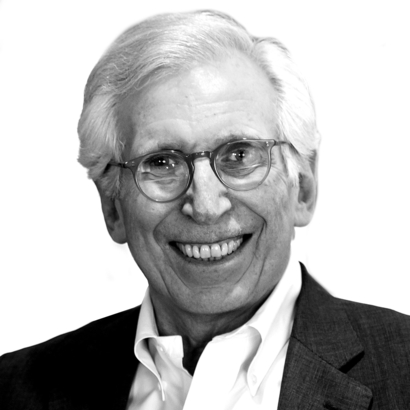The bullet that grazed Donald Trump at a rally in Pennsylvania, captured in a photo of his bloody ear, raised fist, and the American flag, places Trump in a pantheon of wounded presidents, up there with Ronald Reagan, who quipped to Nancy after he was shot in 1981, “Honey, I forgot to duck.”
Reflecting on the assassination attempt, I realized that the story of Donald Trump is a succession of survivals—in business, politics, and the judicial system—lifting him to a pinnacle of celebrity and power.
As a newly hired editor at Random House in the mid-1980s, I was designated to handle the project that became Trump’s book The Art of the Deal, which turned its “author,” a New York–based developer and man-about-town, into a household name.
A sequel published in 1990 was called Surviving at the Top, but at the time, Trump was billions of dollars in debt, accumulating along the way six bankruptcies while retaining a reputation for financial acumen.
Trump always seemed to be just out of range of catastrophe—and to emerge essentially unscathed and even enhanced.
On October 10, 1989, three of Trump’s top casino executives were killed in a helicopter crash. When I offered him my condolences, he replied, “You know, I was supposed to be on that chopper.”
In June 1990, with the second book in preparation, Trump appeared at a Las Vegas book convention on the same morning that The Wall Street Journal had reported that he was more than three billion dollars in debt, a substantial part of which he had personally guaranteed.
On his trip back to New York, I half expected Trump to open the hatch of his plane and jump out. Instead, he was in good spirits, having spent part of the flight in his private bedroom with his paramour of the time, Marla Maples.
Trump then hired Stephen Bollenbach, a financial executive in the hotel business, to negotiate with the banks. Trump sold off the Plaza Hotel and his airline, Trump Shuttle, and was reportedly on an allowance of $400,000 a month. I asked where he had located Bollenbach. “I read about him in Business Week,” he said.
In 2004, NBC premiered The Apprentice, which made Trump a super-celebrity, and—no need to recount what has happened since—in 2016, this apparent business wizard became the president of the United States.
On October 11, 1989, three of Trump’s top casino executives were killed in a helicopter crash. When I offered him my condolences, he replied, “You know, I was supposed to be on that chopper.”
As president, Trump was impeached twice by Congress for “high crimes and misdemeanors” but acquitted by the Senate. He was the subject of a lengthy Russia investigation, which was expected to show his corrupt dealings with the Kremlin. It ended with hundreds of seamy details but no recommendation of criminal charges, and Special Counsel Robert Mueller meekly left the scene.
Then came the aftermath of the 2020 election and the January 6 riot at the Capitol, which, if he didn’t incite in the narrow legal sense, he certainly inspired. Trump then repaired to Mar-a-Lago as his breathtaking effort to undermine democracy and other nefarious activities led to a growing number of criminal charges.
The hearings of a congressional committee on the January 6 insurrection were gripping. Yet the only political consequences were that Republican members of that committee were driven from the party.
There were indictments of assorted Trump associates—Steve Bannon, Paul Manafort, Roger Stone, and Peter Navarro, to name a few—which ended with full pardons or short prison terms. Trump himself was indicted in four felony cases—two in state courts, two in federal—and in civil cases ran up fines of almost $500 million.
As of now there is one conviction, in the New York case, which will be appealed, presumably all the way to the Supreme Court if necessary. Sentencing has now been put off until September. The Georgia state case is on hold, while an appeals court reviews Fulton County District Attorney Fani Willis’s qualifications to proceed with the prosecution. The Florida federal case was dismissed earlier this week, and the January 6 case has been undermined by the Supreme Court’s recent decision about presidential immunity.
In the civil cases, bond has been raised. All of Trump’s legal expenses have been paid. The stock value of his social-media company is, depending on the day, billions.
And now there is the assassination attempt and the G.O.P.’s exultant convention.
A year or so after The Art of the Deal, I found myself improbably at a World Wrestling Federation event in the Atlantic City arena, which Trump was promoting. There were about 18,000 people on hand to see this ersatz sports event. When Trump arrived, the crowd roared in approval. Remember, this is more than four years before The Apprentice.
I had the (to me, ominous) sense then and repeatedly over the decades since that Trump has a hold on a constituency that turns out to be of significant scale. He has defied figurative bullets—financial ruin, legal accountability—and now a real one, yet emerged with a bloody ear, in triumph.
Peter Osnos is a journalist and the founder of PublicAffairs. He is the author of several books, including An Especially Good View: Watching History Happen, and he writes a Substack column called Peter Osnos Platform


